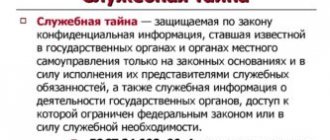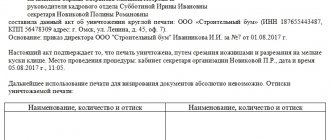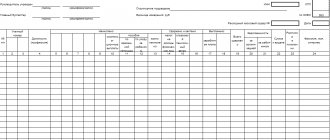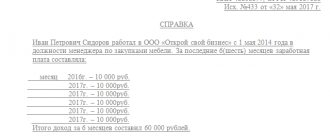What data exists?
Commercial are those that are associated with the products produced by the company, as well as ideas about volumes. This includes data on the counterparties with whom transactions are concluded, the prices at which the goods are provided to the customer. Finally, commercial information is the concept of the costs of manufacturing, storing, and selling a product.
Technical information allows you to learn everything about the product and how it is created. From this data it follows what materials, components are needed to manufacture the product, machines and equipment, technologies and tools used in the work process. It answers the question of what is the sequence of manufacturing a quality product.
Finally, operational data are those that regulate the work of personnel, that is, they give an idea of \u200b\u200btasks, and are also used in monitoring employees. Operational information reveals how the production process at the enterprise is regulated, how commercial and management activities can be adjusted. The benefit of such data is the ability to link all processes into a single complex, which allows you to create a high-quality product in sufficient quantity at minimal cost.
When data is wealth
Why does an enterprise need a resolution on the list of information constituting a trade secret? Where does information subject to classification generally come from? Why hide data?
It is important to understand that information may have some business value. Disclosure of such data may make the company unsafe from an economic point of view. Based on this, there are three large groups of information related to the work of any modern company:
- open for use by the general public;
- limited, accessible to bodies whose rights are prescribed by law (for example, investigators, prosecutors, tax inspectors);
- available only within the company to a number of employees, and sometimes only to management.
Both the second and third groups are data that are included in the list of information that constitutes a trade secret of an enterprise. This means that they have some level of confidentiality (to be determined individually) and there are strict restrictions on distribution. Violating them can lead to quite serious consequences.
Law and order
In order for some information to become confidential, it is necessary to enter a corresponding document at the enterprise - a list of information constituting a trade secret. What to include in it should be determined based on the characteristics of the work of a particular organization. Documenting this step is a very important step. If in the future someone discloses classified data, it will be possible to go to court and prove a violation of interests only if the company’s internal document flow contains a corresponding provision and an order to put it into force.
Who determines the list of information that constitutes a trade secret? The development of the list is carried out jointly by senior management, heads of departments and the person responsible for document flow, but approval is the preference of the general director. The list must have details according to the rules of document flow and be stored on a tangible medium. It is important that in the general documentation system its details are sufficient for quick search and identification. The data specified in such a list should be sufficient to give an idea of what is to be kept secret, but not to disclose anything unnecessary.
Determination of guilt
Before filing a lawsuit, the employer is obliged to discover the fact of disclosure of trade secrets by a specific employee, and the arguments must be truly weighty. Identifying guilt can be divided into a number of stages:
- Confirmation of data disclosure based on direct or indirect evidence;
- Internal investigation, which examines all the circumstances of the data leak;
- Sending an official request to the employee, which sets out the requirement to provide written explanations regarding the disclosure;
- Review of written explanations.
If the employee ignores the requirement, the employer can create a corresponding act. If necessary, a special commission is assembled to analyze the discovered circumstances and make a decision on the amount of liability. All revealed circumstances are recorded in the protocol. After this, punishment is issued in the form of dismissal or a fine.
The employer needs to keep the documents created during this procedure; they will be useful in court if the employee challenges the measures taken against him.
It is very important to comply with this requirement, because if it is not met, the accusation may be considered unlawful. If the punishment is a fine, its amount is calculated by the members of the convened commission, taking into account the actual losses.
Civil liability for disclosure of trade secrets will occur only after confirmation of the employee’s guilt. Evidence may be a document transfer detected by the company's system administrator. The theft of data is considered controversial if it was sent to a personal mailbox or copied to a flash drive.
Witnesses of the transfer of data to third parties can be other employees of the company who saw this fact. Information obtained from CCTV cameras is also taken into account.
Author of the article: Petr Romanovsky, lawyer Work experience 15 years, specialization - housing, family, inheritance, land, criminal cases.
Useful information on economic crimes
- Restriction of competition
- Punishment for non-payment of taxes by individuals
- Disclosure of banking secrecy
- Responsibility for disclosing state secrets
- Responsibility for disclosure of trade secrets
- Disclosure of medical secrets - article of the Criminal Code of the Russian Federation
- What is the penalty for non-payment of transport tax?
- What to do if they extort money
- Counterfeit money
- Non-payment of taxes - Criminal Code of the Russian Federation
- Money laundering - article of the Criminal Code of the Russian Federation
- Criminal liability for extortion
- Article for smuggling cigarettes
- Extortion claim
Security - under guard
The list of information that constitutes a trade secret (medical center, industrial complex, law firm - it doesn’t matter what area the company operates in, the law is equally applicable to everyone) is needed for a reason. If information has been entered into it, its secrecy is ensured by the laws of our country. The following groups of secrets protected by legal regulations are distinguished:
- banking;
- commercial;
- government;
- military;
- official
Commercial is a term equated to a business secret.
What if it’s simpler?
If we put together everything that is stated above, we can come to the following conclusion: a trade secret is usually understood as an inalienable right of any company, which allows some data inside to be called secret and protected. However, the information will not be a secret at the state level. The secret is connected with the activities of the company, with its management decisions, technological developments, and monetary aspects. A key indicator of classifying some information as a trade secret is the damage to the economic position of the organization in the event of publication of the data.
A secret can be considered not only information that is already valuable from a commercial point of view, but also any information that has the potential to become so. The list of information constituting a commercial official secret contains all those types of data that should not fall into the hands of third parties so that the company does not suffer losses. It will not be possible to obtain access to such information legally, but the company must take protective measures.
Criminal liability for disclosure of trade secrets
Collecting information that falls under a trade secret through illegal seizure of documents, bribery, threats or any other illegal means is punishable by:
- a fine of up to 500,000 rubles or the total income of the perpetrator for 12 months;
- correctional labor for up to 12 months;
- forced labor for up to 2 years;
- imprisonment for a term of up to 2 years.
Insider information is data of an organization (company) that is not subject to distribution and is known only to a certain circle of people. Federal Law No. 224 protects this information. It stipulates that violation of the rules for storing, receiving and disclosing insider information may result in administrative and criminal liability https://lexconsult.online/7844-insaiderskaya-informatsiya-chto-eto-takoe
Illegal disclosure of commercial information that became known to the perpetrator in the workplace threatens:
- a fine in the amount of 1,000,000 rubles or the total income of the perpetrator for two years with a ban on engaging in certain work activities for 3 years;
- correctional labor for up to 2 years;
- forced labor lasting up to 3 years;
- imprisonment for a term of up to 3 years.
If such actions of the offender caused large-scale damage to the enterprise or they were committed for selfish purposes, then the punishment will be more severe, namely:
- a fine in the amount of 1,500,000 rubles or the total income of the perpetrator for three years with a ban on engaging in certain types of activities for the same period;
- forced labor for up to 5 years;
- imprisonment for a term of up to 5 years.
In cases where the disclosure of commercial information by an employee or employee has resulted in grave consequences, he may be sentenced by a court to:
- forced labor for up to 5 years;
- imprisonment for up to 7 years.
It is possible and it is not possible
The list of information that constitutes a trade secret of an enterprise determines what data can be disclosed to third parties and what will have to be kept secret. But you should understand: you cannot include any random information in it. In 1991, Russia adopted resolution number 35. It lists all those categories of information that cannot be hidden.
So, you won't be able to hide:
- constituent documentation;
- data from which it follows that the enterprise has the right to operate;
- information on reporting forms that allows you to control whether taxes and other payments regulated by current legislation are paid correctly;
- number of employees at the enterprise, wage level, production conditions, vacancies;
- information reflecting compliance with the rules regarding mandatory contributions, payments, as well as laws regulating environmental protection and labor protection;
- data related to antimonopoly legislation;
- information confirming that the company sold goods that caused harm to the health of citizens;
- data confirming that officials also participate in joint-stock companies, cooperatives, and other enterprises.
Concept
What is considered disclosure of trade secrets?
Enterprises that have a trade secret regime must take certain
measures to protect such information.
Only if this requirement is met will it be considered that the specified data was indeed confidential information and that there was a fact of their disclosure.
Methods for protecting information include:
- mark to documents that constitute a trade secret (both paper and electronic) ;
- appointment of persons who are responsible for maintaining trade secrets;
- adoption of a separate document at the enterprise - the Regulations on Trade Secrets;
- introducing liability for disclosure of trade secrets into employment contracts
- determining the circle of persons who can access confidential information;
- taking measures to block access to information by unauthorized persons.
Disclosure of a trade secret is any action or inaction of an employee who has access to such information and transferred it in any form (oral, written, electronic) to third parties without the owner’s consent.
In this case, any actions of the employee in which he was unable to protect protected data from unauthorized access by third parties will be considered disclosure .
Examples could be:
- Sale of information to competitors by employees who have access to trade secrets. According to statistics, this is the most common way for rival companies to obtain data.
- Providing free access to information that is a trade secret for outsiders (both intentionally and accidentally). This can happen if an employee leaves securities on a desk unattended or leaves a computer on with documents of this kind open, as a result of which other employees or visitors to the company can see this information.
- Excessive talkativeness of an employee, as a result of which he talks about production secrets to strangers - his colleagues, relatives, friends. Even if these actions do not cause any harm to the company, they are still considered a disclosure.
- Stealing important information and using it for personal gain. An example of this could be an employee starting his own business, in which transactions are conducted with the employer's client base.
In this case, it does not matter which employee is guilty of the disclosure - previously dismissed or still working at the enterprise.
Even if he moves to another company, he is obliged to comply with the trade secret regime of his former employer.
He may also be held liable for failure to comply with this requirement .
It is important that they sign documents regarding non-disclosure of secrets (these provisions may be contained in the employment contract or constitute a separate document). The company must also have measures to protect trade secrets.
Is it for everyone?
So, when creating a list of information that constitutes a trade secret of an organization, all of the above cannot be included in it - this is what the law says. At the same time, there is no need to disclose this information to everyone. The data is not open access.
The easiest way to explain this is with an example. Thus, information about how high wages are and the state of reporting on financial transactions is available only to specialized government agencies. The authorities send the company a requirement to disclose this information, and the businessman reveals only what was requested from him in the manner prescribed by law.
Some legal entities have the right to request access to certain data from the above list. Their list can be found in the laws of the country. Clients may require that the company's charter be provided, as well as various certificates and licenses confirming that the company operates legally and has the required level of qualifications in its field.
Protecting information is difficult
Why is it so difficult to compile a list of information that constitutes an organization’s trade secret? It's not even a matter of legal restrictions. On the one hand, you can attract a client if you provide him with comprehensive data about your advantages. The more information a potential customer has, the more complete his understanding of the company, the higher the likelihood of making a decision in favor of this particular organization.
On the other hand, competitors should not obtain too much data about the company that they are always one step behind. Just a small bend already leads to leakage, which in the highly competitive conditions of the modern market can lead to an instant loss of a dominant position.
An example of a list of information constituting a trade secret
- Conditions of existing contracts.
- Processes used in production.
- Plans, prospects, proposed steps for the development of the company.
- Standards for business processes.
- Data related to negotiations with certain persons (investors, customers, partners).
- Ideas, research, know-how.
- Financing (internal, external).
- Risks, tax planning.
The list of information constituting a trade secret is compiled individually in each company. At the same time, the specifics of the field of activity and the peculiarities of work processes are taken into account. Is it possible to enter into an enterprise a list of information constituting a trade secret, a sample of which was taken from the World Wide Web? Please note: on the Internet, all such listings are given in general terms, so you need to carefully study the option you like to see if it matches the specifics of your company’s work. Although, of course, as a “skeleton” when creating a list of information constituting a trade secret, the sample comes in handy.
Criminal Code to protect trade secrets
- determination of the list of information constituting a trade secret;
- restricting access to information constituting a trade secret by establishing a procedure for handling this information and monitoring compliance with such a procedure;
- accounting of persons who gained access to information constituting a trade secret and (or) persons to whom such information was provided or transferred;
- regulation of relations regarding the use of information constituting a trade secret by employees on the basis of employment contracts and by counterparties on the basis of civil law contracts;
- affixing on material media (documents) containing information constituting a trade secret the stamp “Trade Secret” indicating the owner of this information (for legal entities - full name and location, for individual entrepreneurs - last name, first name, patronymic of a citizen who is an individual entrepreneur , and place of residence) [1].
Rules of criminal law on the protection of trade secrets
The public danger of illegally obtaining and disclosing information constituting a trade secret lies in the fact that persons who have committed such acts, or unscrupulous entrepreneurs using “someone else’s trade secret,” deprive their rivals of the advantages (in relation to their competitors) that possession gives them confidential information. By the way, in paragraph 5 of Part 1 of Article 14 of the Law of July 26, 2006 No. 135-FZ “On the Protection of Competition”, among the prohibitions on unfair competition, it is mentioned “illegal receipt, use, disclosure of information constituting a commercial, official or other secret protected by law "
In many economically developed countries of the world, criminal liability has been provided for for a long time for the disclosure of trade secrets, and in the criminal law of France, liability for violation of trade secrets has appeared since 1844.
Part 1 of Article 183 of the Criminal Code of the Russian Federation provides for criminal liability for “illegal receipt and disclosure of information constituting commercial, banking and tax secrets.” The objective side of the crime is characterized by the collection of information constituting a commercial (tax or banking) secret through the theft of documents, bribery or threats. The methods can be varied. The article of the Criminal Code only names theft of documents, bribery, and threats. And this list, of course, is not exhaustive, since the article indicates the possibility of the existence of other illegal methods. A necessary condition for qualifying the act of an offender under this article of the Criminal Code is that there should not be free access to information constituting a trade secret, and its owner has taken all appropriate measures for this.
Part 2 of the analyzed article of the Criminal Code provides for liability for the illegal disclosure or use of information constituting a commercial (tax or banking) secret, without the consent of its owner, by a person to whom it was entrusted or became known through service or work. Thus, the objective side of this composition involves not only the disclosure of relevant information, but also its use. The latter presupposes the criminal's disposal of this information, including for business purposes.
Part 3 of Article 183 of the Criminal Code provides for liability for “the same acts that caused major damage or were committed out of selfish interest.” These may be large material losses incurred by an economic entity in competition, caused by a decline in production, the need to reorient it, a decrease in clientele, loss of markets, etc. Major damage is defined by law in an amount exceeding 250 thousand rubles.
The grave consequences of a crime provided for in Part 4 of Article 183 of the Criminal Code of the Russian Federation are understood more broadly than causing material losses. This may be bankruptcy and liquidation of an organization, bankruptcy of an individual entrepreneur, causing serious harm to people's health, suicide of the victim, etc., if these consequences are causally and culpably related to the illegal disclosure or use of relevant information.
Practice of application of criminal legislation
However, cases of filing statements with law enforcement agencies are quite rare. As a rule, if one of the entrepreneurs knows about the existence of Article 183 of the Criminal Code of the Russian Federation, he believes that this article of the law “does not work” and, therefore, no one will bring anyone to criminal responsibility.
But, fortunately for entrepreneurs, law enforcement agencies have recently begun to investigate such crimes, and, in particular, in the Sverdlovsk region there are cases of criminal cases being initiated under Article 183 of the Criminal Code of the Russian Federation.
The first criminal case regarding the theft of commercial information was opened by the FSB Directorate for the Sverdlovsk Region in 2003. Then counterintelligence officers revealed the fact of unauthorized copying of documents at Uralmashzavod - allegedly in the interests of commercial firms. The offices of these companies were searched, and two Uralmashplant employees wrote a confession. Special services from other regions of Russia and foreign countries were involved in the investigation. However, soon the management of Uralmashzavod officially announced that the violation was discovered by Uralmashzavod employees, and the damage caused was an insignificant amount. The criminal case was closed.
In December 2007, the sales manager of the Cherepovets Metallurgical Plant, owned by OJSC Severstal, was fined. The manager sent confidential information about prices for Severstal products by email to his entrepreneur friend, receiving 250 thousand rubles for this [ 2].
At the end of 2007, in one of the magistrates' courts of the city of Kamensk-Uralsky, a former employee of one of the insurance companies, which, leaving her previous place of work (another insurance company) in 2006, took a printout of the client base under MTPL contracts for the last two months. The lists contained personal data of clients, their addresses and expiration dates of contracts. Having discovered the luring of car owners to another insurance company, the former employer of the convicted woman sounded the alarm and contacted the police [ 3].
An interesting criminal case under Article 183 of the Criminal Code of the Russian Federation is currently being considered in one of the district courts of Yekaterinburg. The interests of the injured party are represented by the Legal Security Agency INTELLECT-S.
At the end of February 2007, two sales managers left the same organization. When they were fired, paper documents containing information constituting a trade secret (“client database”) disappeared from the office, and files with the client database disappeared from computers. It turned out that while still working in this organization, the offenders established their own company with a similar field of activity. At the same time, they significantly inflated prices for products invoiced to potential clients (using the 1C program) on behalf of the company where they worked under an employment contract, after which, in return for these invoices (with a deliberately inflated price for the goods), they offered invoiced goods at reduced prices organization they founded. Thus, they entered into contracts with customers in the interests of their organization, illegally used information constituting a trade secret, to the detriment of the interests of the owner of the trade secret, with selfish interest, which negatively affected the normal operation of the organization and undermined the competitiveness of the goods they provided on the market.
After leaving, the former managers actively used information constituting a trade secret that they became aware of at their previous jobs, contrary to the signed obligations of non-disclosure of trade secrets. Representatives of the victim organization had to apply to one of the police departments. At the moment, the investigation has not yet been completed.
What to do if you discover that your trade secret information has been stolen?
It is necessary to submit an application to law enforcement agencies: the Department of Internal Affairs or the Prosecutor's Office at the actual location of the organization. In an application addressed to the prosecutor or the head of the police department, it is necessary to set out in detail all the circumstances of the disappearance of carriers with information constituting a commercial secret. Attach to the application the explanations of eyewitnesses (as a rule, employees of the company that owns the trade secret) who saw, for example, how, upon dismissal, a former employee of your organization took out secret documents. Also, the application must be accompanied by documents indicating that the organization has a trade secret regime, and other documents (for example, copies of the violator’s obligations on non-disclosure of trade secrets).
If you have suspicions that your trade secret is currently being used by a competitor, ask the police to conduct a documentary audit of the financial and economic activities of this organization, among the initial measures. This event is provided for in paragraph 25 of Article 11 of the Law on the Police. If a criminal case is initiated, request a search. If all these conditions are met, the chances increase that law enforcement officers will find your documents containing information constituting a trade secret (trade secret) and bring “malicious persons” to criminal liability.
Currently, the main thing is no longer the improvement of legislation in the field of trade secrets, but the dissemination of judicial practice of protecting it from unfair competition in the field of economic activity, including using criminal law.
Criminal Code of the Russian Federation
Article 183. Illegal receipt and disclosure of information constituting commercial, tax or banking secrets
1. Collecting information constituting commercial, tax or banking secrets by stealing documents, bribery or threats, or in any other illegal way is punishable by a fine in the amount of up to 80 thousand rubles or in the amount of the wages or other income of the convicted person for a period of one to six months. or imprisonment for a term of up to two years.
2. Illegal disclosure or use of information constituting commercial, tax or banking secrets, without the consent of their owner, by a person to whom it was entrusted or became known through service or work, is punishable by a fine of up to 120 thousand rubles or in the amount of wages or other income convicted for a period of up to one year with deprivation of the right to hold certain positions or engage in certain activities for a term of up to three years or imprisonment for a term of up to three years.
3. The same acts that caused large damage or were committed out of selfish interest are punishable by a fine in the amount of up to 200 thousand rubles or in the amount of the wages or other income of the convicted person for a period of up to eighteen months, with deprivation of the right to hold certain positions or engage in certain activities for a period of up to three years or imprisonment for a term of up to five years.
4. Acts provided for in parts two or three of this article, which entailed grave consequences, are punishable by imprisonment for up to ten years.
The article was published in INTELLIGENCE-PRESS, No. 11/2008
[1] According to the author, this method is not always possible, so the problem can be solved if the stamp “Trade Secret” is affixed to cover letters drawn up during the transfer of paper documents or to traditional paper folders in which various documents, agreements, reports, etc. drawings, diagrams, etc.
[2] Kommersant / March 21, 2008
[3] Kamensky worker / January 3-4, 2008
Trade secret: more details
First of all, you need to consider in more detail the features of the company’s strategic development. The classified data associated with this is the key to the successful development of a company that competitors will not be able to get ahead of. List of information constituting a trade secret in this area:
- know-how, production innovations, secret technologies;
- enterprise development plans, programs, information reflecting planning;
- investments, methods of attracting investments;
- business processes, the rules in accordance with which they are established, technologies for running an enterprise;
- features of the setup and functioning of the organization’s management apparatus;
- information reflecting the specifics of the company’s security.
Types of liability
If a trade secret regime has been legally introduced at an enterprise, then liability . Specific measures depend on several factors :
- whether there was intent when committing the offense;
- which employee is guilty of disclosure - previously dismissed or working at the enterprise;
- damage was incurred as a result of the disclosure and, if so, in what amount;
- whether the employee knew that the information he disclosed was a trade secret.
Depending on all this, liability may be applied to the employee.
Disciplinary – this could be a reprimand, reprimand or dismissal.
Only one punishment can be applied for one offense, and its choice depends on the severity of the employee’s guilt.
Material – is that the employee is obliged to compensate for losses caused to the company as a result of disclosure of information.
If the violator is still working at the enterprise, he is only liable for real damage. As for dismissed employees, they will also be required to compensate for lost profits by the company.
Administrative – consists of a fine, the amount of which is:
Criminal - its use is possible only in the most severe cases. The responsibility in this case is quite serious: large fines (from 80 to 120 thousand rubles), forced labor and even imprisonment for up to three years.
If the violation was committed on a large scale and with obvious mercenary motives, the liability is increased : a fine of up to 200 thousand rubles. or imprisonment for a term of up to seven years.
the losses incurred by the company , the court may exempt the accused from having to pay a fine and replace the punishment with a verbal reprimand.
What if it's about money?
In this area, an approximate list of information constituting a trade secret is as follows:
- agreements, contracts concluded by the company, their conditions, content;
- the structure of pricing for a product, the cost of the goods produced, the services supplied;
- budget, features of its formation;
- information reflecting the enterprise’s income, the company’s profitability and how large the volume of products sold;
- the amount of demand, supply;
- data on the company’s assets, including size, composition, reserves, financial capabilities;
- turnover of goods and money in the company;
- information showing cash, banking transactions, investing, account balances, loans, liabilities;
- results of marketing research;
- data on employee wages, including awards, payments in kind, additional payments.
Judicial practice on trade secrets
Distinguishing between information on the SSKT and information of a publicly available nature is an important step in the procedure for organizing a trade secret regime. An equally significant event is to familiarize company employees with it.
Getting acquainted with the “secret” commercial list occurs:
- when hiring a new employee to work in the company;
- when adjusting the existing list of SSKT.
The possibility of dismissing employees for disclosing SSKT is provided for in labor legislation (more on this in the next section). At the same time, the dismissal of an employee who is not familiar with the list of SSKT for their disclosure may be declared illegal by the court - see, for example, the appeal ruling of the Moscow City Court dated September 18, 2013 in case No. 11-28840.
In addition to the list of SSKT, the company must develop a procedure for working with this type of information, including: schemes for applying and removing special signs on media with SSKT, the procedure for accessing the SSKT, etc. Otherwise, an employee dismissed for disclosing the SSKT will be reinstated according to court decision - for example, in the cassation ruling of the Supreme Court of the Ural Republic dated May 25, 2011 in case No. 33-1796, the employee’s claim for reinstatement at work was satisfied due to the fact that the material media of the SSKT did not have special provisions).
For detailed information about special marks on the SSKT, see the material “What does the trade secret stamp mean?”
It should be noted that on a similar issue there are also opposite court decisions - in the resolution of the Moscow City Court dated December 5, 2013 No. 4у-9352/13 it is noted that the absence of the “Trade secret” stamp in the presence of other protective measures does not indicate that the trade secret regime is not Was installed.
Relationships with other persons
Trade secrets involve concealing from outsiders information about which companies are expected to work with, what steps have been taken in this direction, whether negotiations are ongoing and at what stage they are at. In addition, data reflecting orders and proposals received by the company and taken into work by it are subject to secrecy.
In addition to the directly listed information, a trade secret also includes indirect data associated with it. For example, when analyzing classified information, the resulting product is data that is also unacceptable for disclosure.
Procedure for punishing an employee
In order to accuse an employee of disclosing a trade secret and punish him for it, two conditions must be met:
- The enterprise must introduce a trade secret regime , that is, measures must be taken to protect it and limit access to it by third parties.
- The employer must prove the fact of disclosure of data by a specific employee, and the evidence must be significant.
In general, the procedure for punishing an employee for disclosure can be represented in the form of several stages:
- Establishment by the employer of the fact of disclosure (can occur on the basis of both direct and indirect evidence).
- Conducting an internal investigation at the enterprise with the study of all the circumstances of the case.
- a written request to the employee suspected of disclosure with demands to explain the established fact of violation. The request must describe the circumstances and reasons by which the employer reached its conclusions about the disclosure. After reading the document, the employee must confirm this with his signature.
- Waiting for a written explanation from the employee regarding the accusation against him. Two days are allotted for the preparation of this document. If the employee ignores the request and does not explain anything, the employer must draw up a corresponding report.
- Creation of a special commission , which will analyze and evaluate the discovered circumstances, after which it will decide on the responsibility that the employee will bear. At the end of all these actions, a protocol is drawn up.
- Issuing an order to impose liability on the employee (for example, a fine or dismissal).
- Direct execution of the issued order and punishment of the employee.
The employer should keep all the documents that are created during this procedure - if in the future the employee wants to challenge the measures taken against him, these papers will be useful for legal proceedings.
Compliance with the legal procedure and implementation of all the above actions is an important requirement , since without it the punishment may be considered unlawful.
financial liability is applied to an employee as a method of influence , then the amount of compensation should also be calculated by a special commission.
In this case, only real and not potential losses .
What else can we hide?
In addition to the above, you can also add data related to the types of equipment used and the features of its placement to the list adopted by the enterprise. You can classify information about decisions related to various issues of the functioning of the organization - from managerial to scientific.
You can give the status of a trade secret to information related to meetings held in the company, or more precisely, the topics discussed within them. In this case, it will not be possible to disclose both the purposes of the meetings and the methods of their organization, as well as the results of the events.
If a company participates in auctions or trades, it has the right to classify information about this. In particular, the company’s plans for auctions and preparations for the event are not subject to disclosure. You can also declare the results of trading as confidential information.
A trade secret of an enterprise or entrepreneur is... (examples)
Each business entity, in the course of its activities, produces and (or) receives commercial information, the variety and volume of which depends on:
- on the specifics of the company’s activities;
- its scale and structure;
- diversity of operating segments;
- features of the technologies used, methods and methods of production;
- other nuances.
Some of this information has commercial value and is subject to classification - the application of special protection measures to it. Each business entity has its own list of such information - it may include the following information (for example):
- the progress and content of the company's development and research work;
- formulas and algorithms used in technological processes of product production;
- description of industrial designs and models;
- precise design characteristics of the products being created;
- results of experiments and tests of the created equipment;
- methods of protecting software and other intellectual property;
- conditions for concluding long-term financial contracts;
- data on volumes and types of raw materials reserves;
- security system code combinations;
- other commercial information.
The given examples of trade secrets are only part of the SSKT, which includes an extensive information list and consists of several groups (we will talk about this later).
Information must be classified if it is leaked or disclosed:
- harms the interests of an economic entity;
- deprives it of competitive advantages;
- contributes to the emergence of unjustified costs;
- serves other negative consequences.
We will explain how to separate information subject to protection from the general mass of commercial information in the following sections.
Technology comes first
In practice, information related to the organization’s finances and its developments in the field of science and technology is most often designated as confidential in a company. This is not surprising, because in many ways innovative technologies are what guarantee survival in the market in the near future.
You can hide information about what scientific research is being conducted, what is planned, what tasks are assigned to scientists and what programs they use in their work. The company’s main ideas in this area should not be disclosed.
You can declare confidential the characteristics of products and the parameters of the processes during which they are produced. In this case, third parties will not have access to what volume and size of goods are produced, from what components they are made, under what conditions. If during the work it was possible to discover previously unknown patterns, they can also be classified regardless of the form of expression: analytics, graphics.
Can they be fired under the Labor Code of the Russian Federation for disclosing confidential commercial information (article of the code)?
Disclosure of SKT is a violation of the trade secret regime established in the company, for which disciplinary liability is provided in the form of dismissal (subclause “c” of paragraph 6 of Article 81 of the Labor Code of the Russian Federation).
An employer can apply this article if:
- the information disclosed by the employee became known to him during the performance of his labor functions;
- the employee voluntarily undertook not to disclose the SSKT.
Among the positive outcomes of court proceedings for employers in such cases is the appeal ruling of the Moscow City Court dated October 8, 2013 in case No. 11–33789.
The outcome of the case favorable to the employer largely depends on his ability to prove in court:
- guilt of the employee by conducting an internal audit in the company of the fact of violation of the trade secret regime (presentation to the court of a protocol with the results of investigations conducted by a special internal commission and decisions made);
- compliance by the employer with the procedure for bringing an employee to disciplinary liability (that when imposing a penalty, the employee’s personality, his previous behavior, the circumstances of the commission and the severity of the offense were taken into account).
In order to avoid the negative consequences of disclosing SSKT, the employer needs to know the potential threats of violating the security of secret commercial information and analyze possible ways of leaking it - find out about this in the next section.
And finally
Finally, the safety aspects need to be mentioned. Of course, any company must protect secrets related to the production process and innovations, prospects and plans, but, as we know, the law alone will not save you from competitors. It is worth resorting to the latest and most effective security measures. And how exactly - this is a personal matter for the entrepreneur, the head of the company. Disclosing the features of the security system created for your company is a risky business.
By law, information about how security is organized in a company, how access control works, and what kind of alarm system is installed can be considered confidential. If there is some procedure for protecting trade secrets, it also needs to be protected from unauthorized persons and registered as confidential. Finally, if a firm has access to sensitive partner data, it must also protect it from disclosure.
Measures to protect classified information
In order for secret information to be protected by law, the company must have a com regime. secrets.
It assumes the following security measures:
- Applying the appropriate stamp (mark) to documents. For example, “Secret” or “Trade Secret”.
- Appointment of employees who will be personally responsible for the safety of valuable information; signing a non-disclosure agreement.
- Drawing up and putting into effect the document “Regulations on Trade Secrets”.
- Designation of the circle of employees who have open access to classified information.
- Introducing into the employment contract a clause on liability for disclosure of trade secrets.
- Drawing up a list of measures that are taken to conceal classified information.









